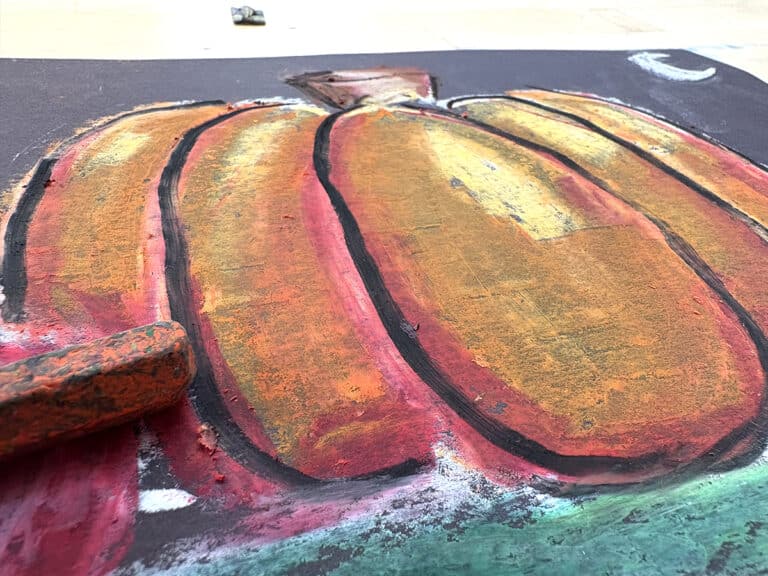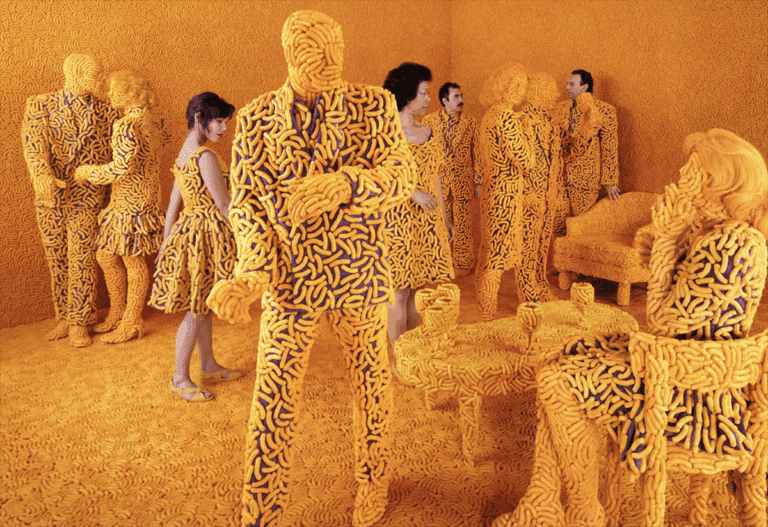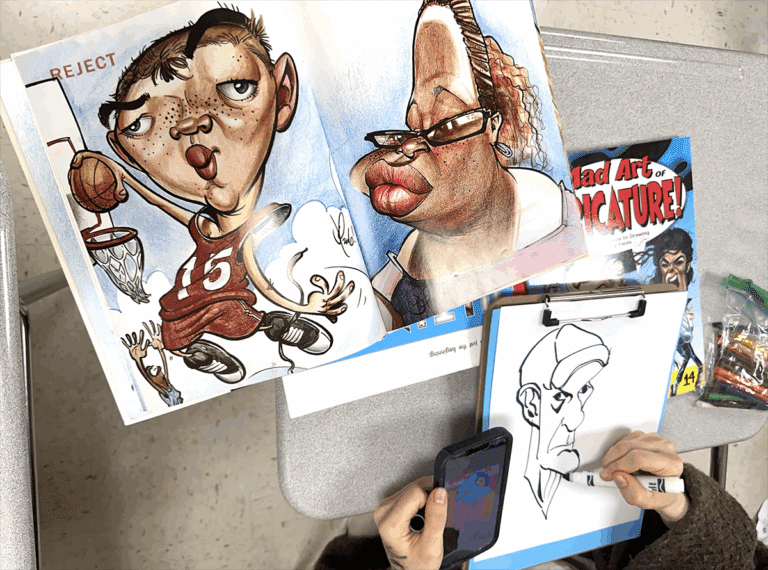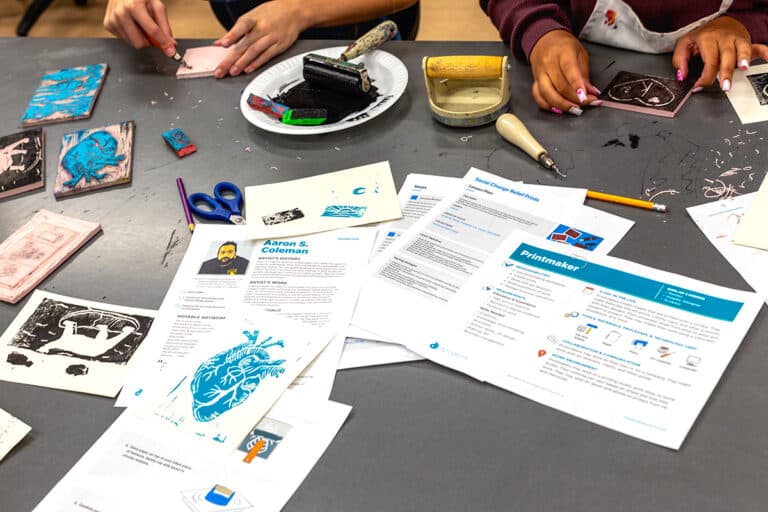Editor’s Note: Surprise! We’re adding a second new voice to the AOE Magazine this week! Please join me in welcoming Debi West. Debi is a veteran art teacher who currently teaches at the high school level near Atlanta, GA. Debi is involved in all things Art Ed and loves sharing her passion for teaching with others. You can learn more about her right here. Please join us in welcoming her to the team in the comments section!
We know figure drawing is important, but it can be so tough to fit into our overly-full teaching schedules. It’s hard to devote a large chunk of time to something where the majority of the work just gets recycled and chalked up to practice. But I’m here to tell you there’s a great way to make it more fun and more productive. In fact, you can even have your students use their final sketches as a part of their portfolios!
Introducing “Tutu Tuesdays,” a collaborative figure drawing experience!
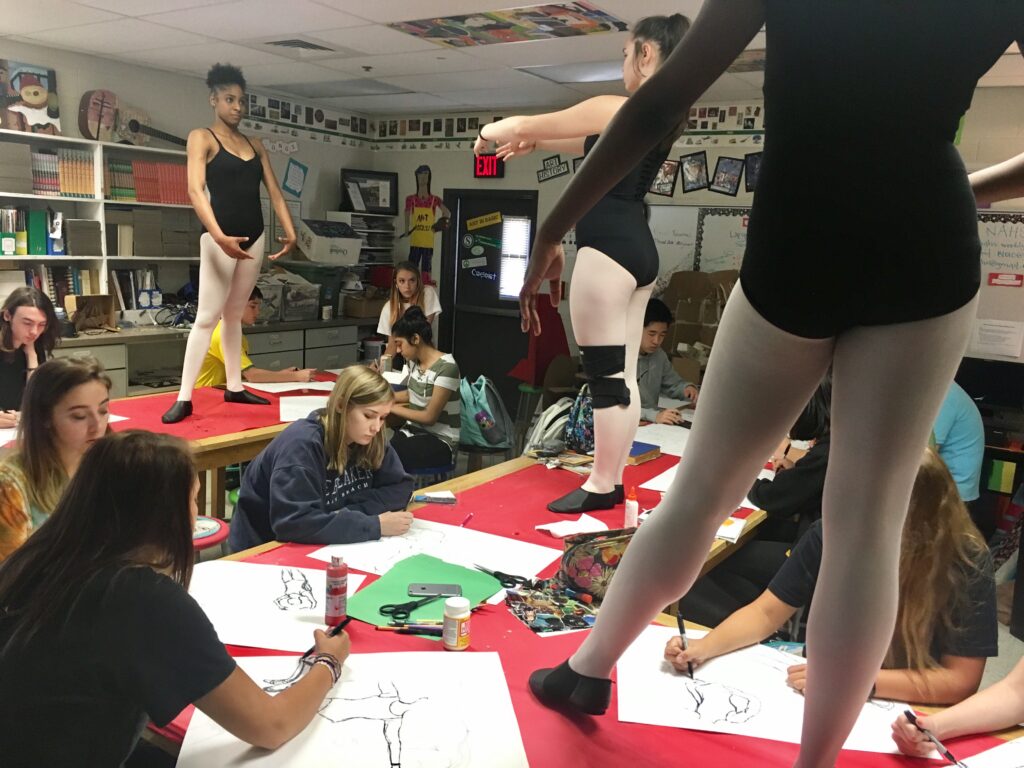
When I started at the secondary level, I was stumped about how to fit figure studies into my curriculum schedule. One afternoon after a fine arts meeting, I started chatting with our dance teacher and a beautiful collaboration began! We decided her dancers would come and pose for my art students over a series of weeks for 10-minute increments. It ended up being a hit that we’ve repeated year after year.
If you’d like to do something similar in your room, here’s how to get started!
1. Find a Partner for Collaboration.
Collaborating with a dance teacher is an obvious choice. However, if your school doesn’t have a dance department, consider other courses in which students may need to exhibit elements of drama or performance. Theater, creative writing or even public speaking courses all may have willing models.
2. Decide on a Schedule and Name Your Day.
In my room, the dancers come once a week for ten minutes at a time. Depending on our schedules, the dance teacher and I have set up anywhere from six to ten sessions. Work with your teaching partner to come up with a schedule that makes sense for both you and your students. Generally, having the dancers come at the beginning of the class works well.
When I started this project, the dancers came on “Model Mondays.” However, we’ve also had “Figure Fridays.” Currently, Tuesdays have worked best, so “Tutu Tuesdays” it is! Find a fun name to get your students excited!
3. Surprise Your Students!
The first time the dancers came, all I told my students was that they were going to have a surprise event. I gave each of them a piece of 18” x 24” white drawing paper and they had their graphite ready to go. When the three dancers walked in, everyone was excited. We had the dancers stand on the tables and strike a three-minute pose. During this time, I asked students to focus on things like contour and measuring. I also reminded them to draw what was in front of them instead of what they thought a figure should look like, which made it a perfect review of observational drawing.
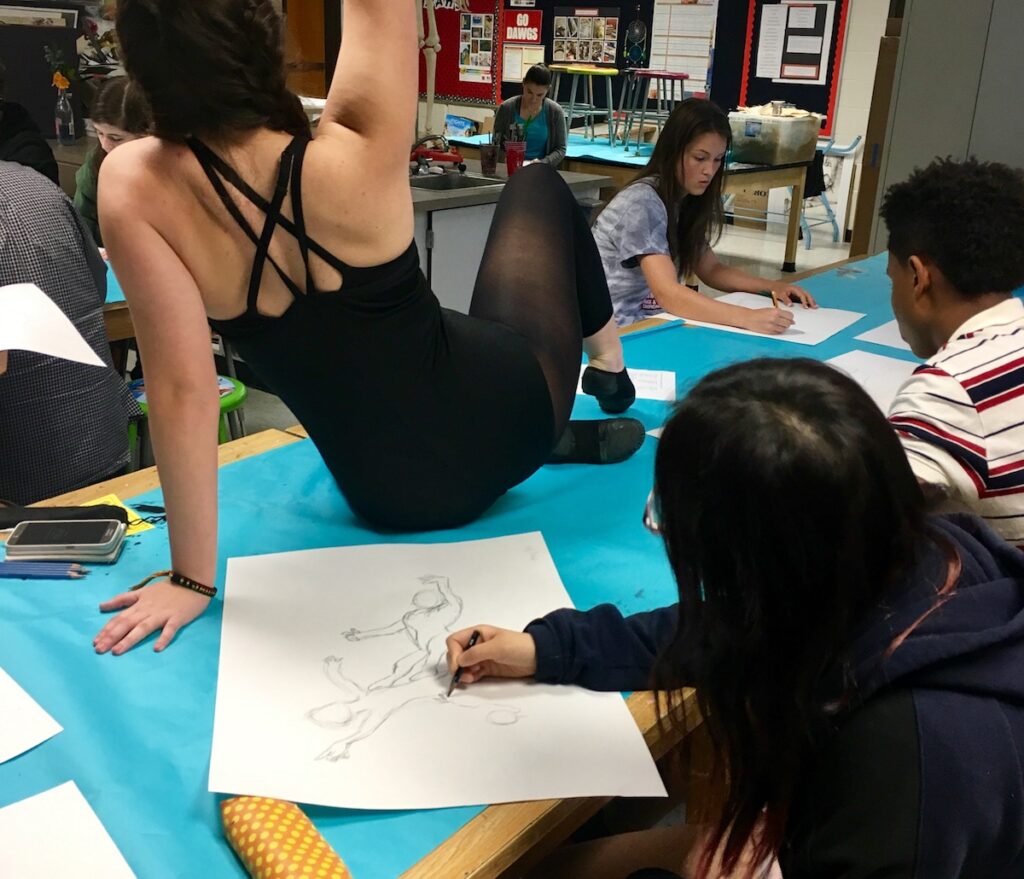
You can break up your time with the dancers any way you want, but I find having them pose three times for three minutes each time works well. All drawings should be completed on the same piece of paper. After the dancers leave, your students can return to their “regularly scheduled” projects.
4. Add to the Drawings Each Week.
The idea here is to have students continue to add to their initial drawings, overlapping figures to create interesting compositions. In order to make this work, the progression of media is important. Your best bet is to leave messier mediums for the end.
Below is one progression of media you could try:
- Week 1 – Graphite
- Week 2 – Pen and Ink (or permanent markers)
- Week 3 – Markers
- Week 4 – Crayons
- Week 5 – Acrylic
- Week 6 – Watercolor
- Week 7 – Oil Pastel
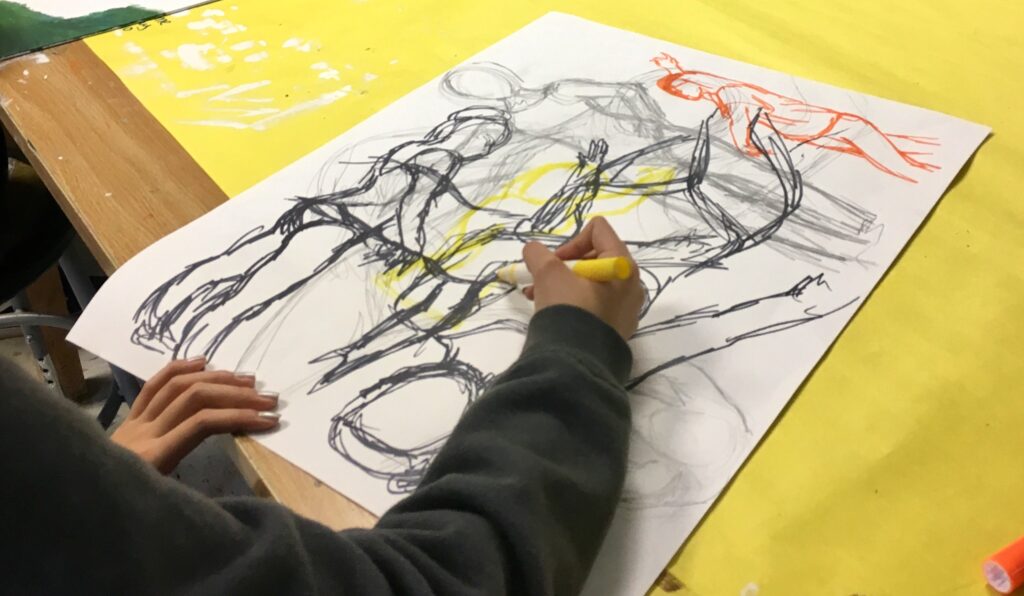
5. Watch Your Students Flourish as They Create a Final Piece of Art!
Throughout their studies, my artists begin to better understand the importance of line quality, proportions, and size variation, and some truly impressive compositions appear!
Once your dancers are done visiting, give your students the challenge of deconstructing their studies and turning them into a final artwork for a grade. In my classroom, I give my students three days to do this, and WOW, they go to town!
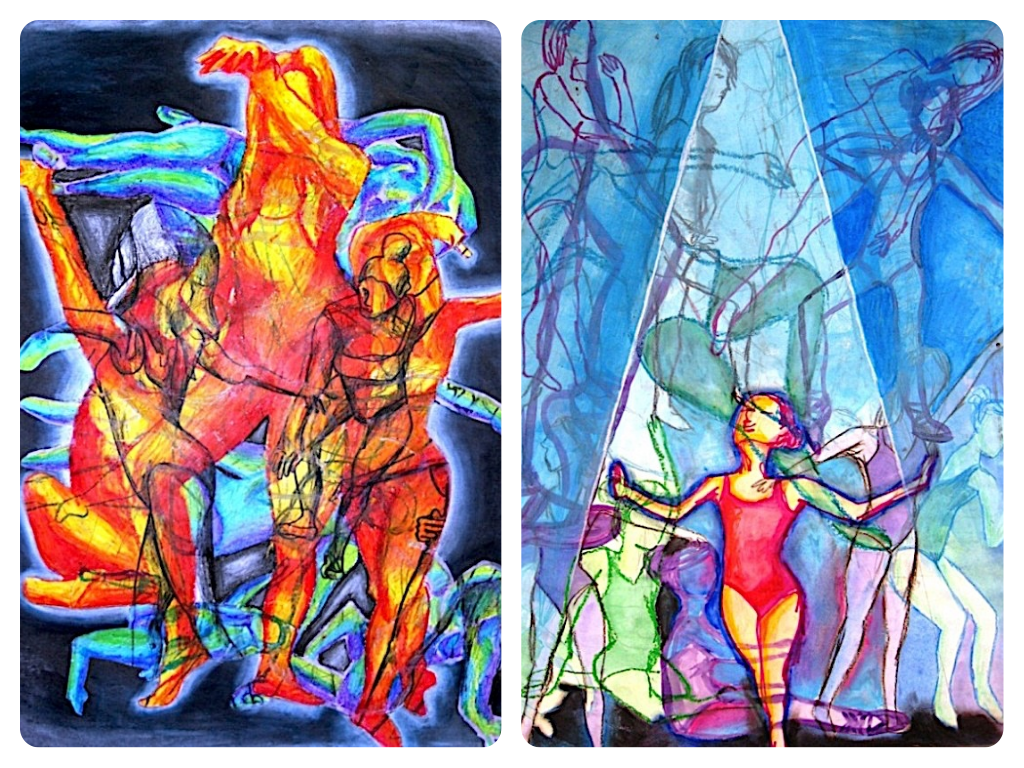
These studies become incredible works that are often used in their AP portfolios and garner a lot of attention. The layers produced in this lesson can’t be achieved when done as a quick project, but over the course of the six to ten weeks, art magic happens while the kids are learning and growing! “Tutu Tuesdays” are always my students’ favorite days and it remains one of my most successful innovative instructional teaching strategies!
Helpful Hints
To make this project go more smoothly, here are five helpful hints.
- Start with a study of anatomy.
I find these are most successful when I teach a lesson on the “Art of Anatomy” first in which students study the human form through drawings of a skeleton. This is a wonderful extension and it’s obvious when comparing and contrasting these lessons how much each student has learned and grown. - Prep beforehand.
It’s important to have the media of the week ready and in good shape to ensure the best results – time is precious during art class so be prepared. - Have a system to keep track of work.
Designate a specific, labeled area to keep all of the drawings so you can access them quickly each week. - Remind students to keep things interesting.
Encourage students to rotate their paper and experiment with color theory in order to create interesting layered drawings. - Remember it’s a cumulative process.
Often students’ earlier sketches aren’t as strong as their final sketches, so every student ends up with a successful piece because they can cut their work apart and use areas that are most successful. It’s all about experimenting and learning since it’s a study first and foremost.
This lesson continues to be a hit year after year and remains one of my most successful innovative instructional strategies. Be sure to think about your students and adapt it to fit your needs! “Tutu Tuesdays” is a great way to take something you might otherwise be dreading and turn it into something wonderful!
How do you teach figure drawing studies to your students?
Do you collaborate with other teachers in your school to come up with creative lessons?
Magazine articles and podcasts are opinions of professional education contributors and do not necessarily represent the position of the Art of Education University (AOEU) or its academic offerings. Contributors use terms in the way they are most often talked about in the scope of their educational experiences.



